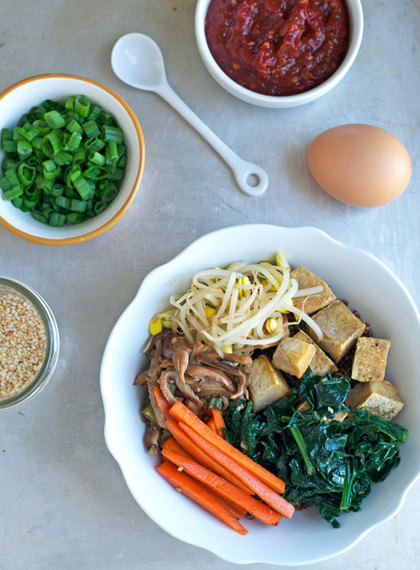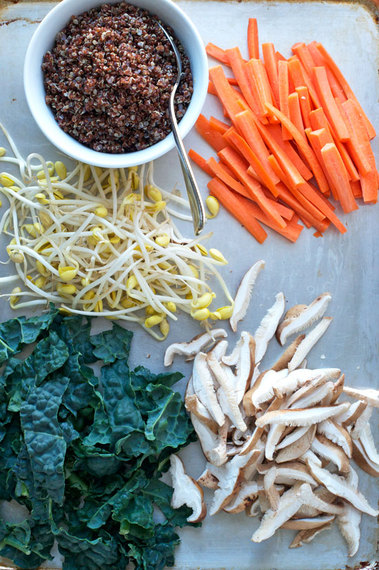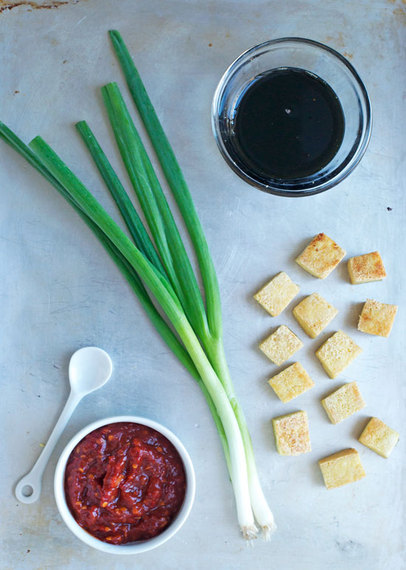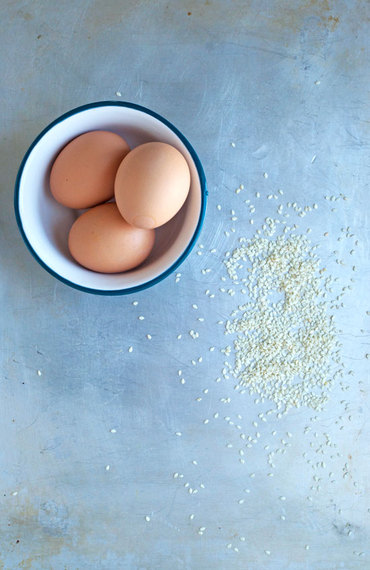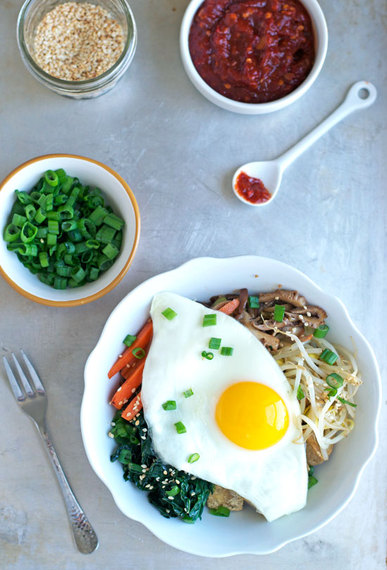Shine up your dancin' shoes because this vegetarian Bibimbap has a beat, and we're swingin'.
A steamy bowl of super-food studded, toasty-roasty sesame oil scented, and hot-mamma chili-bean pasted Korean goodness, bibimbap is also my new favorite word to say out loud. Bi-bim-bap! Try it. No, seriously -- try it.
Bibimbap!
Like a dance or a piece of music, bibimbap is a compilation of individual steps and notes, layered together into a single masterpiece. Separately, the components please and are worthy of our appreciation. Together, they dazzle and merit a standing ovation, which in the case of bibimbap means devouring the first bowl, then immediately rushing back to the kitchen for a second. Encore!
Bibimbap! Sorry. I lack self discipline.
In case you are wondering, I actually said bibimbap aloud while typing it. I'm hooked both to bibimbap's phonetics and to its tasty, healthy flavor-bomb dinner prowess.
Bibimbap (which translates to "mixed rice") is a traditional Korean dish of hot rice served in a large bowl and topped with all manner of mixed veggies, chili pepper paste, and often thinly sliced beef. The fried egg is common but optional -- unless you value all that is good and worthy in life, in which case the egg is totally not optional.
Bibimbap!
I'm out of control.
I often find traditional dishes such as bibimbap to be the most inspiring, because I adore updating them to fit active, healthy lifestyles and common kitchen ingredients. (Unless it's my Grammy's Perfect Peach Shortcake complete with rum butter, in which case she who messes does not deserve a slice. Or rum butter.)
For today's vegetarian bibimbap, I swapped the sliced beef for super-flavored chunks of crispy on the outside, meaty on the inside tofu. (Full tofu details in this post about how to cook ultra crispy tofu that tastes deep fried but isn't.) I also changed the less-than-filling white rice for protein and fiber rich red quinoa.
To build our bibimbap, we begin with heaps of stir fried veggies: beautiful julienned carrots; sassy shitake mushrooms; green-power kale; enigmatic bean sprouts. All vitamin rich, feel good foods.
Next flavor, flavor: a triumphant trio of sesame oil, soy sauce, and honey; fragrant green onions; spice-so-nice chili pepper paste; super-sponge tofu that drinks up every flavor it meets. Big time taste, represent!
To finish with flair: crunchy, toasty sesame seeds and magic-maker eggs. Optional (but not.)
Build your vegetarian bibimbap with care, then dive into the layers and mix with abandon. After all, it's not a dance floor until you break it down.
P.S. Bibimbap!
Ingredients
- 1 recipe Ultra Crispy Unfried Tofu
- 3 tablespoons low sodium soy sauce, divided (use gluten free if desired)
- 2 tablespoons honey, divided
- 3 tablespoons sesame oil, divided
- 6 cups kale; chopped (or other greens of your choice)
- 1 heaping cup bean sprouts
- 3 teaspoons minced garlic (about 4 cloves), divided
- 1 tablespoon extra virgin olive oil, divided
- 4 green onions thinly sliced, white and green parts divided
- 4 ounces shiitake mushrooms; sliced thin
- 3 carrots, cut into matchsticks
- 4 eggs
- 2 cups cooked quinoa (2/3 cup dry)
- 2 tablespoons toasted sesame seeds
- 3 tablespoons chili pepper paste
Directions
- Prepare Ultra Crispy Unfried Tofu. In a small bowl, stir together 2 tablespoons soy sauce, 1 tablespoon honey, and 1 tablespoon sesame oil. Toss with cooked tofu and set aside.
Ingredient Note: Chili pepper paste (gochujang) is available in many grocery stores and at Asian specialty food stores. It will give you the most authentic and appropriate spice, but If you substitute sriracha in a pinch, I won't tell.
Erin Clarke is a food blogger fearlessly dedicated to making healthy food taste incredible. Find more recipes like Vegetarian Bibimbap with Crispy Tofu and Quinoa on her blog, The Law Student's Wife.
